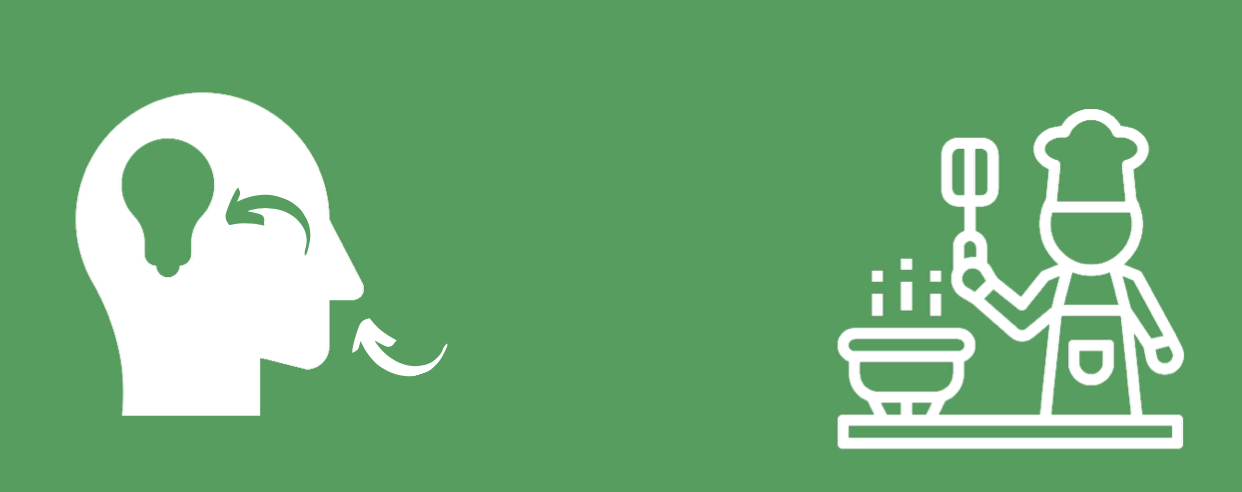(Part 1 of 3) "Digestive Dysfunction Deep Dive" Video Series: What does proper function look like?
(Transcribed below)
Hi! Welcome to this 3-part Digestive Dysfunction Deep Dive series, where we're taking a look under the hood in terms of what is happening at meal time inside the body.
And, what we'll find is that there's really one major digestive player responsible for the vast majority of digestive dysfunction that happens in the body. And we'll have a clear sense of which player that is by the next video.
So, in this first part we'll go over exactly how digestion is supposed to work from top to bottom, step by step, so that you understand exactly what we're trying to achieve.
You'll use this foundational knowledge in contrast to the next videos, where we'll check out the ways it can all go wrong. So take your time, and if at the end you still have a few questions, feel free to re-watch if you need to.
Many people tend to misjudge exactly where digestion begins. So let's try something. Take a moment here and think to yourself about what the answer might be. Where does digestion begin?
OK, have something in mind? Let's see where we land.
The brain. Digestion begins in the brain. Many mistakenly think that digestion begins in the mouth, which may seem intuitive, but let's think about this a little more.
Say you walk into the house after a long day at work and your partner is cooking in the kitchen. You're hit with the aromas of the food as you enter the house.

The food's smells enter into your nostrils and cause your brain to switch on.
Maybe you become very interested and make your way over to the stove to get some more smells and to get a glimpse of what the food looks like. This process is so pleasurable isn't it?
That's because this is part of what kicks your digestive secretions into gear.
You may notice that at times like these when you're really looking forward to a meal your mouth will just start salivating, or maybe you'll hear your stomach begin to rumble as your endogenous stomach acid production kicks in.
These are processes that your brain is initiating in preparation for food intake. And, in fact, without this sort of courtship between your senses and the sight and smells of food, your body won't produce the proper amounts of digestive secretions that it needs in order to digest well.
Now let's move to the physical gateway of our GI tract, the mouth. When we ingest a bite of food, our mouth uses a combination of mechanical and chemical processes to prepare it for the stomach.
First, saliva is produced. Saliva is mostly water, but also contains salivary amylase - a form of digestive enzyme that breaks down carbohydrates.

In fact, a lack of saliva has been correlated with carbohydrate intolerance and thus an adequate supply is a very important aspect of digesting this macronutrient.
Next, the teeth and tongue work together to mash and mix the food into a paste that can easily move down the esophagus and into the stomach.
The esophagus, known more colloquially as the gullet, serves as a transition space from the mouth to the stomach. After food is processed in the mouth, it moves down the esophagus until is reaches the stomach's entryway.
Now, for those of you who have experienced symptoms such as acid reflux, GERD, or heartburn, pay attention because I'm about to mention a very important body part that needs to seep into your consciousness and become part of your health mantra.
The gateway between the esophagus and the stomach is called the Lower Esophageal Sphincter - commonly abbreviated to LES. I'll refer to the LES quite a bit in this series, so when you hear LES, think "entryway to the tummy".

The LES has a tough job. It has to discern exactly when it should open and allow swallowed food to enter into the stomach, and when to remain closed so that acidic contents in the stomach don't bubble up into the esophagus where it can cause damage. The timing of this is largely dictated by acid signals from the stomach, which we'll talk about more in part 3.
This brings us to our star - at least around here - our sacred tums. The stomach.
The stomach is a big bladder built for churning and burning. When food enters into the stomach, Hydrochloric Acid is released, commonly referred to as HCl, as well as the protein digesting enzyme, Pepsin. These two tend to come together.
The stomach lining, also referred to as the digestive mucosa, is extra thick compared to the rest of the digestive tract, because it's built to withstand the potent acidic liquid it houses. Mucus is also secreted to line the epithelium, which provides extra protection by acting as a barrier between the mucosa and the acid.

The furnace of the stomach is meant to reduce everything that enters it into what I love to call "safe sludge" but what is commonly called "chyme". Essentially this refers to your food in a liquified and reduced form.
This safe sludge does not just refer to food. We ingest all kinds of things that we don't mean to - many dangerous microbes using food as a vehicle to enter our body through the GI tract. We also breathe things in and touch our faces with contaminated hands. The important part is that they are stopped from making it any further by the stomach's 'acid barrier'.
Once the safe sludge or chyme has broken down sufficiently, it moves through the Pyloric sphincter, which is the entryway into the small intestine.
This is a very important step because in-between being in the Pyloric sphincter and entering into the Small Intestine, multiple other secretions are signaled to be released to act on the chyme - initiated by its level of acidity.
Where are these additional secretions coming from? 3 places, actually. The pancreas, the liver, and the gallbladder.

First we have the pancreas. The pancreas is perhaps most important here because it releases what we call Bicarbonate.
You could think of it like Baking Soda. Bicarbonate neutralizes acid. A primary role here for the pancreas is to alkalize the very acidic chyme fresh out of the stomach, back to a more neutral pH to make it safe for the intestines. It's also only after it has been neutralized that the next secretions can do their jobs. Let's look at those now.
After the chyme becomes neutral, the pancreas is signaled to release pancreatic enzymes. These enzymes work to reduce the chyme even further into its chemical components, the most-absorbable forms the body can utilize.
And we're not finished reducing! Next the liver and gall ladder release digestive bile. Bile is what your body uses to process and digest fats. The bile substance emulsifies the fat and, again, breaks it down into its chemical components for maximum utilization by the body.
Bile is also a major player in elimination, it plays an antimicrobial role and helps to lubricate waste products on their way out of the body. And just to reiterate, it absolutely requires the bicarbonate to have neutralized acidity in order to do its job.

Finally, in preparation for the incoming chyme, the small intestine secretes mucous, which helps to protect it from any large undigested food compounds that might form blockages or compromise it's structural integrity as it makes its way through.
After being subjected to all of these secretions - the chyme or safe sludge is now the safest it will be, carbohydrates are glucose, proteins are amino acids, and fats are fatty acids.
It thus proceeds to move through the small bowel where it can be absorbed. This movement is accomplished by small involuntary contractions called peristalsis. It is here that around 95% of absorption will take place.
Absorption is accomplished through the use of villi along the intestinal walls. Villi are little arms extending into the center of the tube, and are lined with their own extensions called microvilli.

These arms maximize the surface area where nutrients can be absorbed. They also carefully filter what does and does not get absorbed into the blood stream according to the body's nutritional needs.
After the chyme has moved through the small bowel, it enters the large intestine, through the ilocecal valve.
This valve serves is an important barrier, as it keeps the microbes involved in feces formation in the large intestines, and away from colonizing the small intestine, which needs to be relatively free of these microbes so that the body has first dibs on the nutrients there.
When the chyme enters the large intestine, remaining nutrients are squeezed out - roughly 5% of absorption - and any water is recycled.
Microbes colonizing this area feast on the leftovers. When of a healthy composition, they produce beneficial end products for the body, including colonic-cell-fueling short chain fatty acids such as butyric acid, and vitamins K2 and b12.

They also help to further digest and breakdown lingering food components, making them easier for the body eliminate.
And finally, the last step of digestion happens when we successfully eliminate this waste material via defecation.
Wow, what a great story. Wouldn't it be awesome to end here?
Unfortunately, what we find, is that many factors in modern life, often lead to chronic digestive dysfunction in one or all of these processes.
Do you have a guess to wager about which digestive player is responsible for how all fo this can do wrong?
We'll put a magnifying glass on this dysfunction in the next video.


